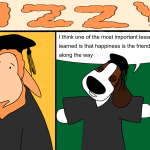Last week’s congressional elections brought a new party with a different outlook to the United States Congress. Amidst the turmoil surrounding a reform of the nation’s policy on Iraq, a different kind of reform is long due in foreign relations. For over 40 years, the United States has invested heavily in foreign aid to Sub-Saharan Africa. These investments have only expanded in recent years, after President Bush dedicated himself to the righteous cause of addressing the plight of AIDS in the region. Americans have overwhelmingly approved of African aid programs, but recent polls indicate that only one-third of Americans would approve of further spending increases in African aid programs. Why? Because the American population has perceived the rampant corruption within many of these programs and that much of the money targeted for the African population goes to support suspect regimes and dishonest politicians.
p. Proportionally, the United States gives a very small percentage of its GDP to foreign aid, compared to most nations. However, the total amount of U.S. aid to Africa over the past forty years comes to a sizeable $500 billion. At last year’s G-8 summit, world leaders agreed to double aid funding by 2010 and to continue increasing foreign aid for the foreseeable future, amounting to roughly $1.6 trillion in aid for the first decade of the program. The G-8 leaders also agreed to forgive the massive debt of these countries, which came with a roughly $400 billion price tag. The United States, which currently provides about 20 percent of total funds for the world’s aid, will soon be providing about 50 percent, with $125 billion dollars per year going to Sub-Saharan Africa alone.
p. Yet, despite the massive investments the United States has poured into Africa, per capita incomes on the continent have fallen an appalling 25 percent over the past 30 years. Roughly 46 percent of the African people now live in what can only be described as extreme poverty. Despite American efforts, the state of sub-Saharan Africa has only gotten worse. It has been estimated that anywhere between $95 billion and $500 billion in aid programs have been lost due to corruption via a number of means, from kickbacks surrounding the placement of diamond mines and oil fields, to skimming the funds from government monopolies on agricultural exports. The continuous flow of funding coming from the United States and other industrialized nations has allowed corruption to be streamlined, and with the recent proposed increases at the G-8 summit, future corruption can only be expected to increase. The massive aid increases can be viewed as merely rewarding the inefficient and disgraceful manner in which the aid programs have been managed by African regimes as well as negligent American bureaucrats.
p. How does the United States deal with the problem of corruption without limiting resources to the impoverished people of sub-Saharan Africa? As we have seen from the history of aid programs, beginning with the Marshall Plan used to bring Europe out of the ashes of the Second World War, aid programs are most effective when there are no strings attached. However, without strict regulations outlining how money should be appropriated as well as close oversight to ensure funds are being spent properly, aid programs are very vulnerable to corruption. No one expects fraudulent practices to be completely expunged, but strict oversight is now required to assure an efficient aid process that helps the poor rather than lining the pockets of dishonest politicians. The new Democratic majority in Congress must take action to show the American people that their hard-earned money, which could be used to help the poor within the United States, is being more productively used to help the indigent people of sub-Saharan Africa.
p. For the time being, I am one American that is not entirely convinced.
p. __Joshua Powers is a senior at the College. His views do not necessarily represent those of The Flat Hat.__


































